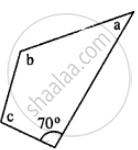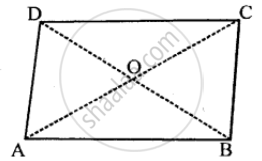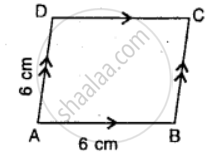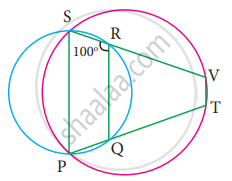Advertisements
Advertisements
Question
The diagonals of a rhombus are 6 .cm and 8 cm. State the angle at which these diagonals intersect.
Solution
The diagonals of a Rhombus always intersect at 90°.
APPEARS IN
RELATED QUESTIONS
How many diagonals does following have?
A convex quadrilateral
How many diagonals does following have?
A triangle
What is the sum of the measures of the angels of a convex quadrilateral? Will this property hold if the quadrilateral is not convex? (Make a non-convex quadrilateral and try!)
In a quadrilateral, define of the following Sides.
Complete of the following, so as to make a true statement:
The number of pairs of adjacent angles of a quadrilateral is .......
Complete of the following, so as to make a true statement:
The sum of the angles of a quiadrilateral is .... right angles.
Complete of the following, so as to make a true statement:
In a quadrilateral the point of intersection of the diagonals lies in .... of the quadrilateral.
In Fig. 16.19, ABCD is a quadrilateral.
How many pairs of opposite sides are there?

A quadrilateral has all its four angles of the same measure. What is the measure of each?
In the given figure, PQRS is an isosceles trapezium. Find x and y.

Complete the following statement by means of one of those given in brackets against each:
A line drawn from the mid-point of one side of a triangle .............. another side intersects the third side at its mid-point.
In the given figure : ∠b = 2a + 15 and ∠c = 3a + 5; find the values of b and c.

The angles A, B, C and D of a trapezium ABCD are in the ratio 3: 4: 5: 6. Le. ∠A : ∠B : ∠C : ∠D = 3:4: 5 : 6. Find all the angles of the trapezium. Also, name the two sides of this trapezium which are parallel to each other. Give reason for your answer.
In a parallelogram ABCD, its diagonals AC and BD intersect each other at point O.

If AC = 12 cm and BD = 9 cm ; find; lengths of OA and OD.
Write, giving reason, the name of the figure drawn alongside. Under what condition will this figure be a square.

In the figure, PQRS and PTVS are two cyclic quadrilaterals, If ∠QRS = 100°, then ∠TVS =
If angles A, B, C and D of the quadrilateral ABCD, taken in order, are in the ratio 3 : 7 : 6 : 4, then ABCD is a ______.
The common part between the two angles BAC and DAB in figure is ______.
What conclusion can be drawn from part of given figure, if BD bisects ∠ABC?
Draw a rough sketch of a quadrilateral KLMN. State two pairs of adjacent sides.
